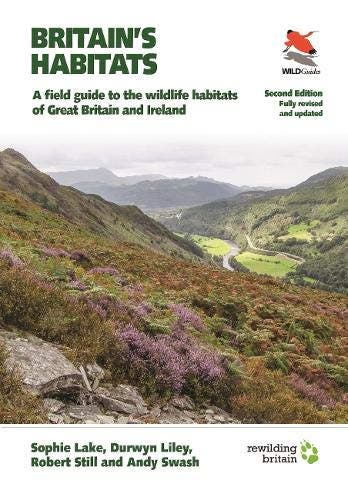
Britain’s Habitats: A Field Guide to the Wildlife Habitats of Great Britain and Ireland – Fully Revised and Updated Second Edition
by Sophie Lake, Durwyn Liley, Robert Still, and Andy Swash
Princeton University Press
There’s something distinctly intriguing about a country that has agriculture covering 69% of its land surface but loves its habitats and wildlife as much as Britain. It’s hard to find a nation that loves its habitats more than the Brits, who have described it in lavish detail and from myriad perspectives for centuries. From Daniel Defoe’s classic A Tour thro’ the Whole Island of Great Britain published in 1724 and even before that, Britain has had no shortage of books describing its beauty.
But things have also changed. Gone are the days when most people would look for impressions and intricate journal stories. What most of us want now is quick and accessible information. Somehow, Britain’s Habitats manages to do a bit of both.
Personally, I quite enjoy it when books are true to their title. Britain’s Habitats does just that — it describes the country’s habitats, virtually all of them. There’s nothing groundbreaking about that, but where it truly shines is presentation.
It starts with a wholesome introduction to the great diversity and variety of ecosystems, including details about the country’s geology, climate, and conservation measures. It’s inspiring to see just how much conservation is emphasized in the book, and this manages to create something that all books on nature should: it creates an emotional connection to the reader. I found myself interested in things I already knew, or things that would have seemed obscure and dull just moments ago. I wanted to know what flowers grow on upland wet heaths, or what makes coastal marshes unique. Although the book is filled with facts and information, it also speaks to the human, not just the brain — and that’s something that’s too often overlooked.
The essence of the book, however, are the brief descriptions of habitats. Every habitat is presented on a few pages, starting with a general description (lavishly decorated with photos), a map of where the habitat can be found, information about rare species, and other practical information (like how to recognize the habitat or when to visit it).
Disclaimer: I’m a sucker for both nature photos and maps. Britain’s Habitats hits hard on both ends. Curiously, the book doesn’t really opt for an eye-catching approach — there are lots of photos of bushes, shrubs, and things that wouldn’t strike the average traveler as particularly interesting. But to this reviewer, it seems that the book doesn’t strive to be pretty, it strives to be interesting, and that it accomplishes.
Overall, I’d say Britain’s Habitats shines in two regards: it makes for an excellent guide for those travelling through Britain (anywhere in the country), and it offers a deeper understanding of what nature has to offer. In these pandemic times, maybe we need a bit more of this.



